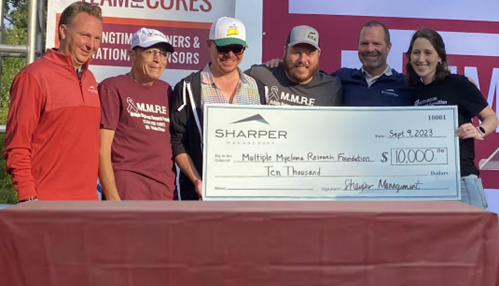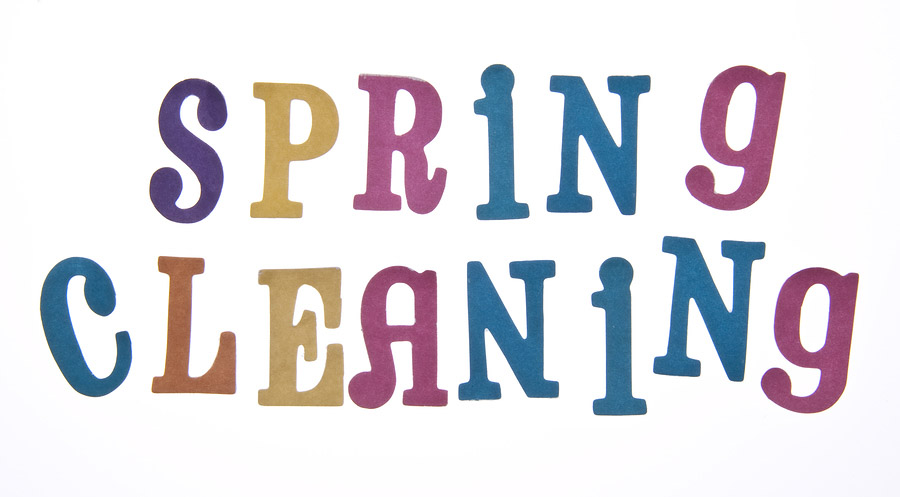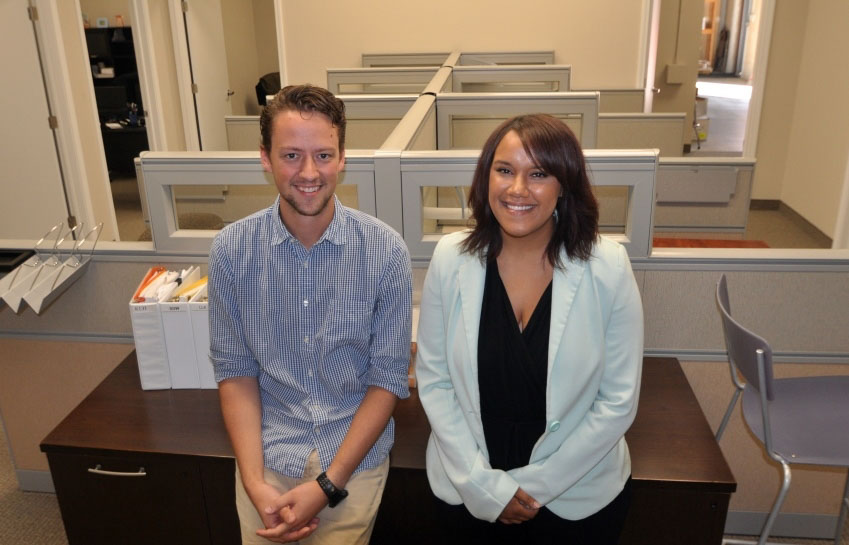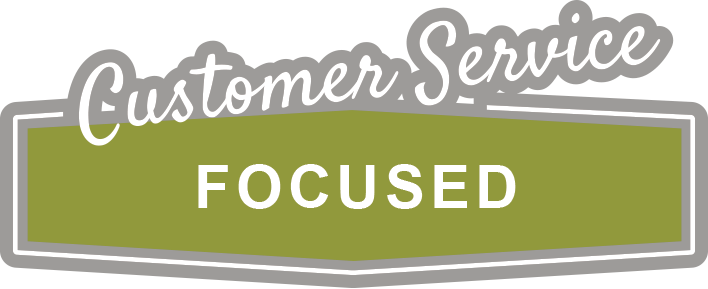Communication is Key: Forging Stronger Communities through Effective HOA Communication

The Foundation of Community Harmony Effective communication lies at the heart of a thriving Homeowners Association (HOA). In this blog post, we will delve into the critical role of clear and transparent communication within an HOA, exploring why it is the foundation for building stronger, more harmonious communities. The Significance of Clear Communication in HOAs Clear communication is the lifeblood of any community, and HOAs are no exception. Your community wants to feel heard, and they also want to feel valued, which does not happen without communication. If you are implementing changes, those changes need to be effectively communicated to establish trust along with cooperation. When people feel left in the dark when it comes to changes, negativity and anger can arise, which is never good. It is important to show through your communication efforts a sense of unity among residents to create a healthy community environment. The Impact on Community Engagement When communication is conducted effectively, community engagement improves along with transparency. Residents will feel more inclined to join community events, participate in discussions and create a sense of belonging. This can even open the door to new initiatives created when people feel like they are in a positive environment to want to make positive changes themselves. Tips for Successful Communication Strategies in HOAs 1. Regular Newsletters and Updates: Explore the power of regular newsletters or community updates distributed through various channels. Sharing consistent information keeps residents informed about upcoming events, policy changes, and other crucial updates. 2. Digital Platforms for Community Interaction: Communication through social media and online forums is another great communication strategy. These channels provide a space for residents to voice concerns, share ideas, and connect with their neighbors. 3. Town Hall Meetings and Open Forums: Town hall meetings and open forums create a platform for direct communication between the HOA board and residents. By creating regularly scheduled meetings can improve transparency and address concerns in real-time. 4. Utilizing Email and Text Notifications: Email and text notifications for urgent updates or time-sensitive information is a great way to keep your community informed. These channels ensure that residents receive critical information promptly. Handling Conflict Through Effective Communication Conflict is inevitable, but effective communication can be a powerful tool for resolution. By effectively communicating the rules set for your community, you leave less room for confusion or interpretation and more room for transparency and guidelines. There can come times when conflicts arise internally between other community members and by having clearly defined rules prevents these conflicts from escalating. Building a Culture of Transparency As mentioned earlier, transparency is crucial to maintaining a healthy community and should be considered a cultural cornerstone within an HOA. Setting a culture of transparency, openness and honesty builds trust among residents. In turn, by being as transparent with residents as possible promotes a positive community atmosphere. Elevating Community Living Through Clear Communication Having successful communication tactics lead to running a healthy HOA. By being transparent with your community through various forms of communication, you keep your residents happy and informed. It is not just a necessity but a catalyst for building vibrant communities. Take advantage of multiple communication strategies from newsletters to open forums. Continual communication efforts are required to maintain a healthy community. Ready to elevate your HOA management? Contact us today to learn more about Sharper Management’s HOA property management services. Sharper Management is a locally-owned, mid-sized property management company offering a full-suite of premiere services to the Minneapolis-St. Paul seven-county area.
Sharper Gives Back

Each year Sharper chooses a cause or organization that will be the benefactor of this annual event. MMRF is a wonderful organization that is “commitment to advancing health equity so that all myeloma patients can benefit from the scientific and clinical advances we pursue. Since our inception, the MMRF has committed over $500 million for research, opened nearly 100 clinical trials, and helped bring 15+ FDA-approved therapies to market, which have tripled the life expectancy of myeloma patients.” Check them out at https://themmrf.org/ “Giving back to our community is one of our core values at Sharper Management,” said Dan Cunningham, owner and CEO. “As with any cancer type, Multiple Myeloma is a devastating condition. Unfortunately, it has affected the family of one of our staff in a significant way. They have found a great resource in the MMRF, though. It means a great deal to us to be able to support them and all of the families affected by Multiple Myeloma.”
Loss Assessments

In the Midwest, we’re all too familiar with summer storms and the damage they can cause to houses and buildings. HOA reserve funds are available for unexpected damages or emergencies, but using them could cause the association to be short on funds for future projects and non-insurance related repairs. Understanding how your insurance policies work can make claims and repairs a much smoother process. With heavier storms, sometimes the master policy isn’t enough to cover damages. Unit owners may need to help pay for repairs for damages to shared buildings, such as shingles being torn off a condo roof. The master policy can only pay up to coverage limits, so it’s up to the homeowners to pay the rest. The amount owed is assessed by the association, and as an owner, it is your responsibility to pay your share. However, needing to pay for community damages doesn’t mean you’re paying out of pocket. It’s a good idea as a homeowner to get Loss Assessment Insurance under your HO6 policy, if not already required. In addition to property damage, this coverage helps to pay for injuries on the premises, liabilities, and deductibles under the master policy. Homeowners who have appropriate coverage under their HO6 policy can submit a claim to their insurer. As a member of the HOA board, consider making it a requirement for owners to have loss assessment coverage to avoid any collection problems, as these assessment costs can often exceed $10,000 per unit. Boards should also work with their HOA management company to make sure that they are navigating these issues correctly. Insurance claims and loss assessments can seem confusing, but Sharper Management is here to help guide you through those difficult times.
Operations and Personal Protection Continue During COVID

As the pandemic continues, most people have adjusted to the “new normal” that is affecting everyone in the community association industry, the associations, and the owners. While we may be exhausted by the restrictions and repercussions of the coronavirus, we need to remain cognizant of actions needed to prevent the spread. There are several areas that associations should continue to monitor: CDC Guidance: Provided by the CDC, there is specific guidance for “shared or congregate housing,” which includes condominiums and other multi-family buildings. This information is comprehensive and includes many guidelines to maintain safe operations, acknowledging community associations’ unique needs and challenges. Declaration, bylaw, rules, and regulations: While there may not be specific COVID-19 related provisions, these documents provide insight on what general terms could impact or govern steps taken to respond to these issues. Social gatherings: Social gatherings should be continually evaluated, especially those seeking to occur indoors. Recommendations and restrictions are fluid, and it is important to stay abreast of these changes. Outdoor events are typically easier to implement, however with cold weather, indoor facility use may be more common. Construction projects: Continue to appropriately manage access to buildings by vendors. Create and maintain appropriate protocols, emphasizing the steps these vendors will take to ensure proper cleanliness and sanitization while working. Usage of amenities: There is ample information regarding access to amenities such as pools, fitness centers, etc. within associations. As this is an ongoing, fluid situation, it is important to create a schedule to evaluate these aspects. Adjustments should be continually made based on the latest data and guidance available. CDC Fact Sheet: Communication is critical to avoiding issues or misunderstandings in operations. Posting the updated/current CDC guidelines or fact sheet in buildings ensures that owners and others entering the building are aware of the standards and protocols in place. There is an overwhelming amount of information and suggestions for safety guidelines out there but keeping up to date on the aspects above is a good foundation. Balancing safety issues with common sense and community spirit is the best remedy available to us during this time.
The Benefits of Spring Cleaning

With all of us being at home for the time-being, this might be your year to do a deep-down spring clean. There are a lot of surprise benefits to spring cleaning! It helps alleviate allergy and asthma symptoms. Cleaning up pollutants like dust, pet dander, dirt, mildew, mold, and more will improve your air quality and help out any residents who have allergies. Dust all of your hard surfaces, vacuum your carpet (especially under the furniture), sanitize your hard surfaces (bathroom/kitchen especially),and air out rugs/cushions since soft surfaces attract dust. It curbs stress and improves productivity. A cluttered home, especially if you work out of a home office, can negatively affect your focus because of the overstimulation. Buy some organizers if you have a lot of objects without a place to store and get to work on decluttering. Try turning on some music while cleaning to help boost your endorphin levels. Music and the result of a clean space has been proven to make people happier. Make a pile for the things you no longer need, but are in good condition. The items will all set to move out to a donation center when they open again. A deep clean of your entire home might also alert you to any damages or things that need to be maintained. It’s always better to stay on top of those issues so that they don’t get any worse. Get a “fresh” start on 2020 by improving your mental and physical health with a good clean. If tackling the whole space at once seems too daunting, then take it one room at a time. Your home is your oasis, and it’s important to take care of it.
Creating Successful Annual Meetings

For some Board members, the annual meeting can be a source of anxiety. And for many community associations, the annual meeting has become the collective wasteland for complaints, critiques and requests from residents. The first step in creating constructive and beneficial annual meetings is understanding the definition and primary purpose of it. Definition & Function – Minnesota Statute 317A, Nonprofit Corporations Act, mandates that all corporations with members (which all homeowner associations are) “shall hold at least an annual meeting of members with voting rights.” Minnesota Statute 515B, Minnesota Common Interest Ownership Act, mirrors the language, “a meeting of the association shall be held at least one per year.” Perhaps more importantly, though, is understanding the primary role of this meeting. Once again, both 317A and 515B provide context. The fundamental reasons for an annual meeting are as follows: (i) an election of successor directors for those directors whose terms have expired (ii) a report on the activities and financial condition of the association, and (iii) consideration of and action on any other matters included in the notice of meeting. Put simply, the purpose of the meeting is to vote in board members, approve the minutes from the previous year, and give a brief financial and activities report of the past year. That’s it. Rarely are there other items requiring a membership vote. And never should that vote happen unless it is included in the notice of the meeting. Pitfalls – where many associations might struggle with the annual meeting, it typically comes down to the same reason. The perception is that it is the annual meeting of the members, therefore owners should have a say and a vote on various matters. Many associations have years of precedence that’s been set where there is no control and other topics dominate the meeting. Solutions – first, control and order must rule at an annual meeting. The meeting facilitator, typically the Board President, should open the meeting by stating the expectation that the purpose of today’s meeting is to vote in Board members. Other operational business should be brought more appropriately to an open Board meeting, where action can be taken. It is so important to recognize section III. of the state statute cited above. “Consideration of and action on any other matters included in the notice of meeting.” To reiterate, no other business can be conducted at the annual meeting if it was not included in the meeting notice. Any motion from the membership on this or that could be grounds for an illegal vote. Think about it. What if you choose not to go to the annual meeting because there was nothing listed on the agenda (which is typically the case for an annual meeting) and then you learned that at the meeting the membership voted to raise dues? You probably would have gone had you know that was going to be voted on. While it might seem counter-intuitive and cold to keep an annual meeting of members very brief and matter of fact, it is important that it be run as a business meeting. If an association wants to use the meeting as an opportunity to hear concerns and have dialog between the board, management, owners, etc., have an open forum session after the annual meeting is adjourned. No minutes. No votes to be taken. Just a forum for dialog. And, once again, try to push those conversations and request to a Board meeting, where action can be taken. Hopefully a more thorough understanding of the definition and function of the annual meeting, along with the pitfalls and solutions mentioned above, can help your association create more successful and constructive annual meetings going forward.
Sharper Rolls Out Client Care Center

Earlier this month, Sharper Management rolled out a new department designed to streamline communication efforts and increase customer service, and thus increase client satisfaction. The Client Care Center is a “call center” like setup where every call from homeowners, vendors, realtors, insurance agents, etc will receive a live body in the Sharper office. Perhaps more importantly, those staff members answering calls and emails are equipped with the information and tools to satisfy even the most difficult of questions, and to help facilitate resolution on just about any matter. The reality is an overwhelming majority of the 75 calls received on average each day are very basic questions. Are pets allowed? What is garbage pickup day? How much are my monthly dues? Can you send me a certificate of insurance? All of these questions can be handled by the team of individuals making up Client Care. Such calls and emails need not be sent to a Community Manager or an Assistant Community Manager, interrupting their workflow, or worse, going to voicemail because they are unavailable to take the call or unable to respond to the email quickly. Even more difficult inquires such as maintenance requests (ex: a piece siding blows off) and even vendor service issues (ex: they missed my driveway when they plowed) can be facilitated directly by a Client Care team member. Finally, another focus and purpose of the Client Care Center is to more thoroughly document communications. Actionable items such as maintenance requests can be put into a Task and our Task system can be better utilized. Call logs can be generated for association reporting purposes – and for important historical documentation record keeping. Overall, better administrative tracking will result from the Client Care system. “At the end of the day, we recognize this is a customer service industry. We also realize that our overall goal is to help enhance property values for the clients that entrust us with management services for their association,” said Matt Froehlich, owner and chief operating officer. “Our goals with the Client Care Center is two-fold. First, it clearly provides an enhanced customer service experience for the nearly 13,000 homes we are responsible for assisting. Secondly, it frees up our Community Managers and Assistant Managers to be working on bigger picture things like building budgets, getting bids, contract negotiations, and enables them to spend more time “in the field” focusing on things such as vendor and project management, site inspections and rule enforcement efforts. The Client Care Center will be a win-win for everybody and we are extremely excited about it.” Client Care is staffed by Sam Crowther, previously having spent the past year as the receptionist at Sharper and comes with a vast background in customer service positions – and Grant Peterson, having spent over a year as an assistant community manager at Sharper and whom also has significant background in communications and customer service.
Sharper Offers Board Training Opportunities

Sharper Management will present two free Board training opportunities in the coming months. Both sessions will be held at the Bell Plaza office building in Bloomington, MN (3800 American Blvd W). All Board members from community associations managed by Sharper are welcome to attend. Coming January 2020 – “Board Basics: An Orientation for Board Members” This general orientation session will be led by Sharper’s two directors of community management, Candy Lee, CMCA, AMS, PCAM and Josh Reams, CMCA, AMS, PCAM. Topics covered will include: * Defining Types of “Associations” * Roles & Responsibilities of the Board * Financial Fundamentals * An Overview to Governing Documents & State Statutes * How to Run Effective Board Meetings * Insurance Basics * Property Management Practices Tuesday, October 15th 2019 at 6 p.m. – “Financial Fundamentals and Simplifying Insurance” This focused session coincides with most association’s end-of-fiscal year and insurance renewal seasons. Insurance and financials are always large and complex topics. Led by Sharper’s two directors of community management, Candy Lee, CMCA, AMS, PCAM and Josh Reams, CMCA, AMS, PCAM, in addition to trusted insurance vendor and expert, Eric Skarnes, of Insurance Warehouse, this session will cover topics such as: * Defining Types of Insurance Policies & How the Interact * Insurance Claims & How They are Handled * Market Place Update * Basic Financial Reporting * Understanding Operating Cashflow & Reserve Savings * Budgeting Process & Methods * Replacement Reserve Studies & Requirements If you are interested in reserving your spot, please email info@sharpermanagement.com
Mill Pond Condominium No. 1 & 2 Added to Growing Sharper Client List

Mill Pond Condominium Numbers 1 & 2 are now part of Sharper Management’s continually growing list of properties under management. Located in Chaska, MN, each condominium complex has 32 units. A locally owned, mid-sized property management company located in Eden Prairie, MN, Sharper Management’s exceptional financial software and reporting capabilities coupled with their experienced managers made Sharper the clear choice for Copper Ridge. “As we continue to expand our presence in the southwest metro, we welcome Mill Pond Condominiums 1 & 2 and look forward to wonderful future together”, states Dan Cunningham, Sharper’s CEO and Partner. Known for their reliable and committed approach to services for condominium and townhome associations in Minnesota, Sharper Management specializes in providing exceptional property management solutions. Offering a full-suite of premier services to the Minneapolis-St. Paul seven-county area, Sharper Management continues to expand their service area and look forward to building more new relationships throughout the Twin Cities.
Winter in Minnesota

Now that we’re in February, Minnesota’s winter is roughly halfway over. Whether you love the cold or hate it, it is part of everyday life in the northland. If you’ve recently downsized into a smaller townhouse or condo, you might be dealing with a worse case of cabin fever than normal. To help cheer you up, here are some fun ways to get through the rest of winter Stay Active While it might not look like it, there are tons of fun outdoor activities that you can enjoy in the winter. For the thrill seekers, Afton Alps has skiing, snowboarding, and downhill tubing. If you like to run, visit Theodore Wirth Park at 1301 Theodore Wirth Parkway, Golden Valley, MN. Located just 10 minutes from downtown Minneapolis, this expensive park has miles of trails ranging from flat and paved to steep and winding; it is perfect for every type of runner. Theodore Wirth Park is also pet-friendly, so your favorite pup can get in some exercise too. While helping your pet get exercise during the winter can be challenging, there are a multitude of pet-friendly parks in the area. Also, remember to pick up after your dog. While no one likes to be out in the cold for longer than necessary, parks and the common areas of your association are used by all. Get Organized While a single-family home has room for anything and everything, condos and townhomes traditionally have less square footage. Especially around the holidays when people are getting gifts and buying sale items, it is very easy for the clutter to build up. One way to help stay on top of it and keep from being buried in a pile of stuff is to stay organized. For some great tips, check out this blog entry we did called “Simplify Your Space.” https://sharpermanagement.com/2017/04/simplify-your-space/ Taking a Vacation? A vacation to somewhere warm is always a nice change. If you do decide to leave town for a while, remember these important tips: Always leave your heat ON, set no lower than 55 degrees. Inform your management and neighbors that you will be leaving, and give someone emergency contact information and/or instructions to get into your unit in case of an emergency. Contact us about doing winter maintenance checks if you’re planning to be gone for an extended period of time. We hope these tips will help make the rest of your winter more enjoyable.
